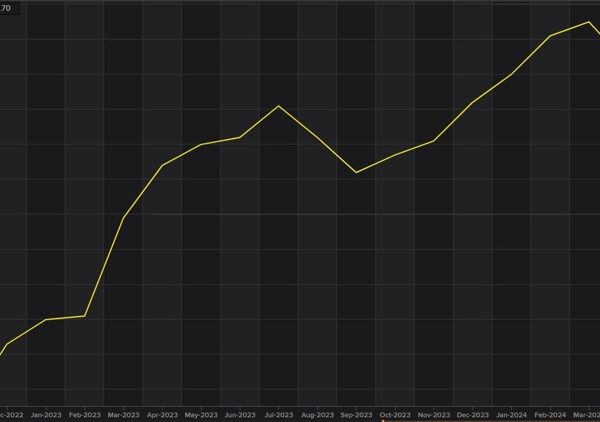

The once-mighty titans of retail are faltering. Barneys New York, an icon of luxury shopping, shuttered its doors in 2020. Sears, a 125-year-old institution, teeters on the brink of extinction. Even Macy’s, whose Thanksgiving Day parade is synonymous with American culture, has announced store closures and job cuts. These are not mere stumbles—they are symptoms of a seismic shift in the retail landscape.
For over a century, department stores defined consumer culture. These grand emporiums were more than just places to buy goods—they were social hubs, windows into aspirational lifestyles, and symbols of urban progress.
But the world has changed. The convenience of e-commerce, the rise of fast fashion, and shifting consumer values have eroded their once-unassailable position. The COVID-19 pandemic only accelerated these trends, pushing many stalwarts to the brink.
Yet to write off department stores entirely would be premature. These institutions have weathered economic storms before. The question now is not whether department stores can survive, but how they must transform to thrive in a digital age.
The invisible store
One path forward lies in embracing what we might call “invisible retail.” This concept goes beyond mere convenience—it’s about integrating seamlessly into consumers’ lives, anticipating needs before they arise.
Imagine a department store that exists primarily as a digital platform, using AI and data analytics to curate personalized selections for each customer. Physical locations would serve not as traditional stores, but as experiential spaces where customers can interact with products, receive expert advice, and enjoy immersive brand experiences. The actual process of purchasing would be so frictionless as to be almost invisible, happening in the background through automated systems and predictive algorithms.
Nordstrom offers a compelling example of this approach. Their Nordstrom Local concept stores carry no inventory but instead focus on services like personal styling, alterations, and online order pickup. These smaller-format locations serve as frictionless hubs where customers can efficiently access Nordstrom’s full range of products and services without the overwhelming experience of a traditional department store.
Moreover, Nordstrom has integrated digital tools to enhance the shopping experience across channels. Their omnichannel strategy includes a livestream shopping platform that provides customers with virtual versions of in-store meet-and-greets, allowing them to shop for products in real time and interact with experts and brand founders.
This model caters to the modern consumer’s desire for efficiency and personalization. It acknowledges that for many routine purchases, the act of shopping itself is not the goal—getting the right product with minimal effort is.
The indispensable curator
Another avenue for reinvention lies in repositioning department stores as curators of lifestyles rather than mere sellers of products. This approach recognizes that consumers increasingly seek experiences, identities, and solutions to life’s challenges.
Selfridges in London exemplifies this concept. Their “Project Earth” initiative goes beyond selling sustainable products, offering repair services, rental options, and refill stations to curate a sustainable lifestyle. By hosting in-store art exhibitions and even a movie theater, Selfridges transforms shopping into a holistic experience.
This model opens up new revenue streams and deepens customer relationships. A store that helps plan a wedding, for instance, can extend that relationship into home furnishing and beyond, becoming an indispensable partner in customers’ lives.
The intimate community
Perhaps counterintuitively, the digital age has created a deep hunger for authentic, in-person experiences and communities. Department stores are uniquely positioned to meet this need, leveraging their physical spaces and brand heritage to create meaningful connections.
Macy’s has taken significant steps in this direction with its “Story at Macy’s” concept. This ever-changing retail space features curated merchandise around a specific theme, which rotates every few months. More than just a shopping area, it’s designed as a community hub, hosting events and workshops related to each theme. For instance, a wellness-themed Story—dubbed “Feel Good STORY”—has featured yoga classes and nutrition workshops alongside relevant products. This approach transforms Macy’s from a mere point of sale into a dynamic community space where customers can connect, learn, and engage with brands in meaningful ways.
By fostering these communities, department stores can create emotional connections with consumers that transcend transactional relationships. They become not just places to buy things, but places to belong.
The path forward blends tradition and innovation
The future of department stores lies in artfully weaving together invisible retail, lifestyle curation, and community building. This transformation demands a fundamental reimagining of the department store’s role in the 21st century.
At the heart of this evolution is a shift in how these institutions leverage technology. No longer just a tool for efficiency, technology has become the means to forge deeper human connections and craft more meaningful experiences.
While doomsayers have long predicted department stores’ demise, what we’re seeing is not an ending, but a reinvention. The department store of tomorrow may bear little resemblance to its predecessors, yet its essence remains unchanged. It will continue to be a place of discovery, a canvas for dreams, and a hub where needs are not just met but anticipated and exceeded. In this way, the reimagined department store doesn’t just survive—it thrives, proving that even in our digital age, there’s still a place for the magic of retail done right.
More must-read commentary published by Fortune:
The opinions expressed in Fortune.com commentary pieces are solely the views of their authors and do not necessarily reflect the opinions and beliefs of Fortune.
In our new special issue, a Wall Street legend gets a radical makeover, a tale of crypto iniquity, misbehaving poultry royalty, and more.
Read the stories.















